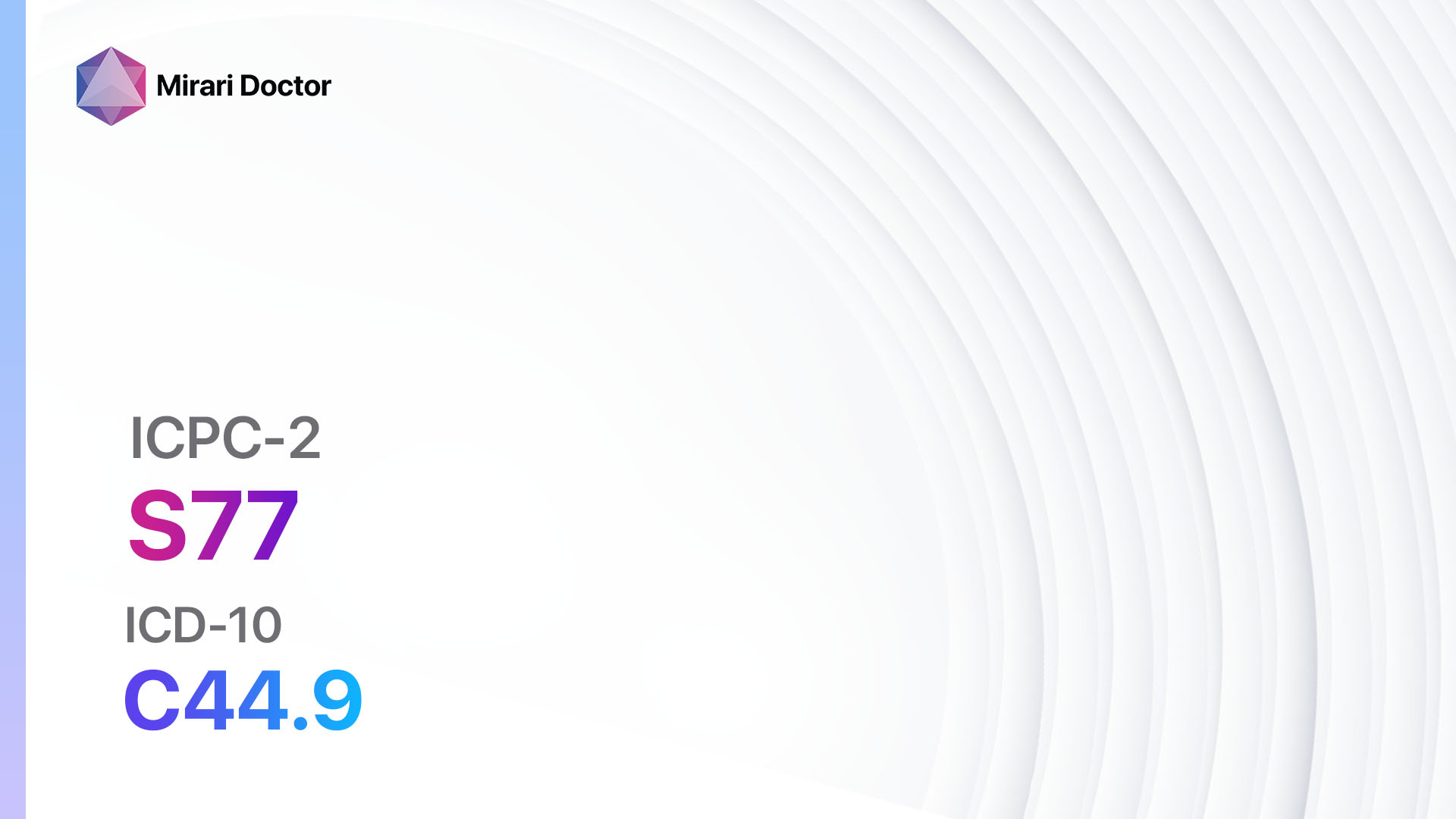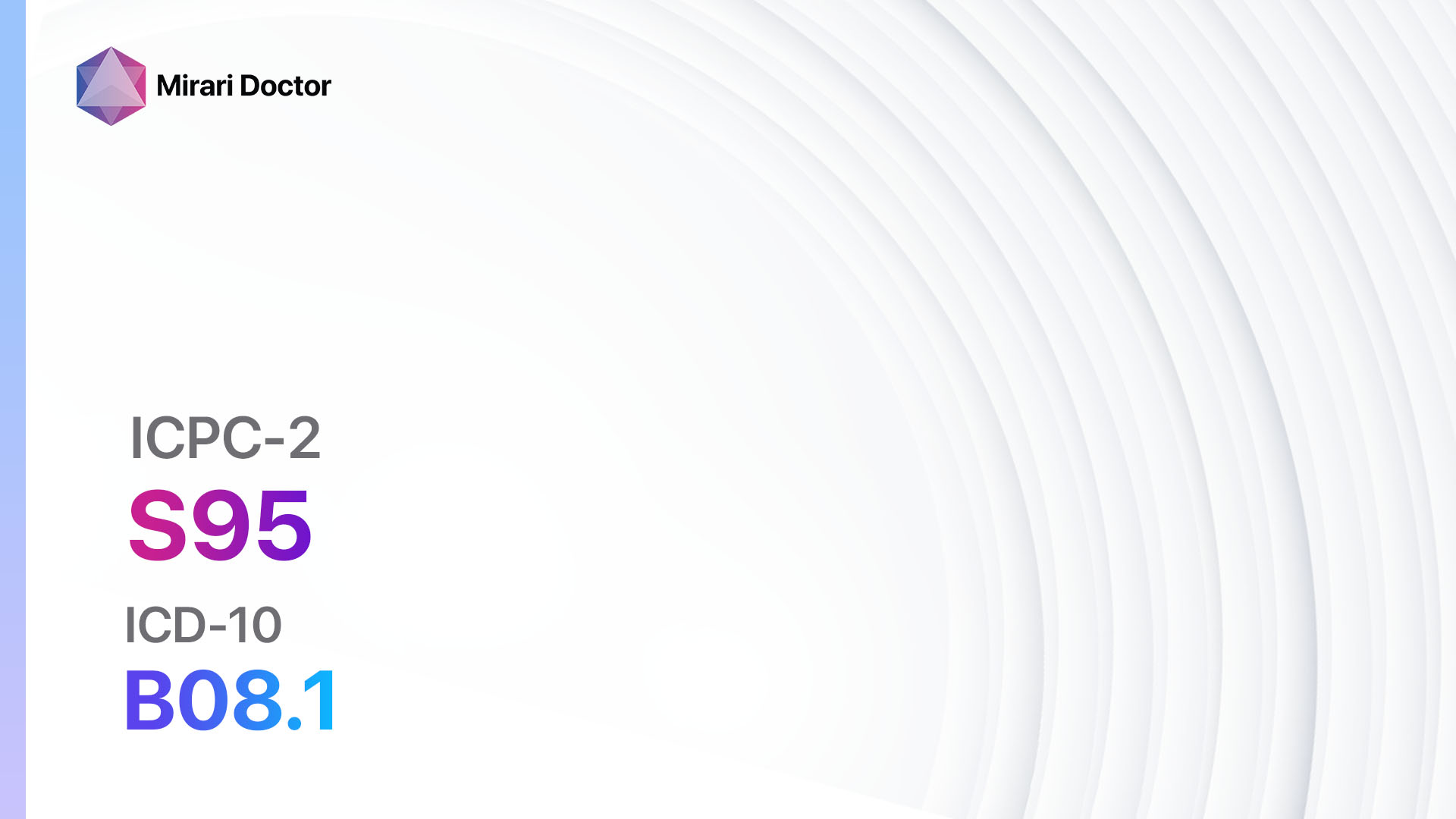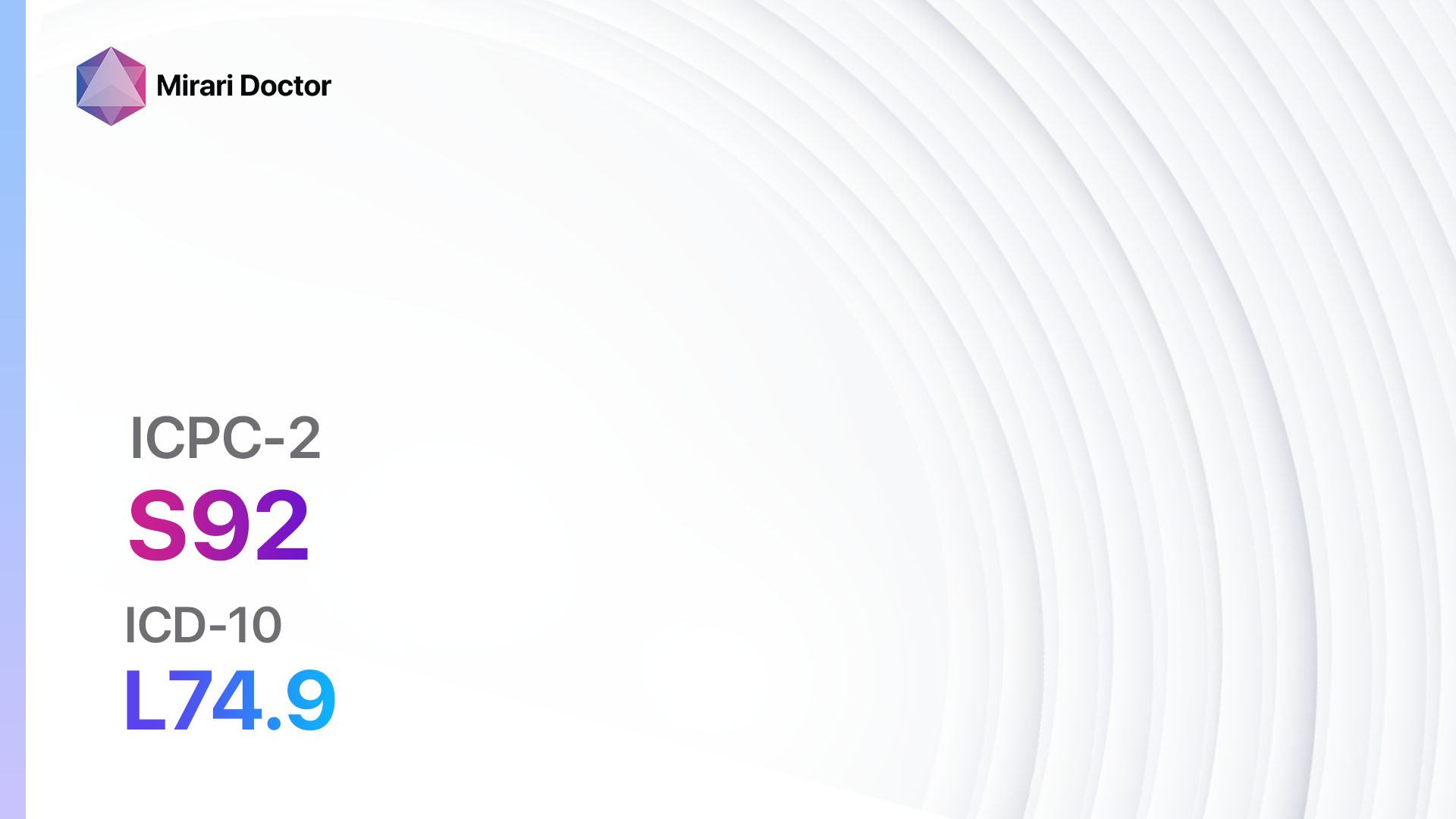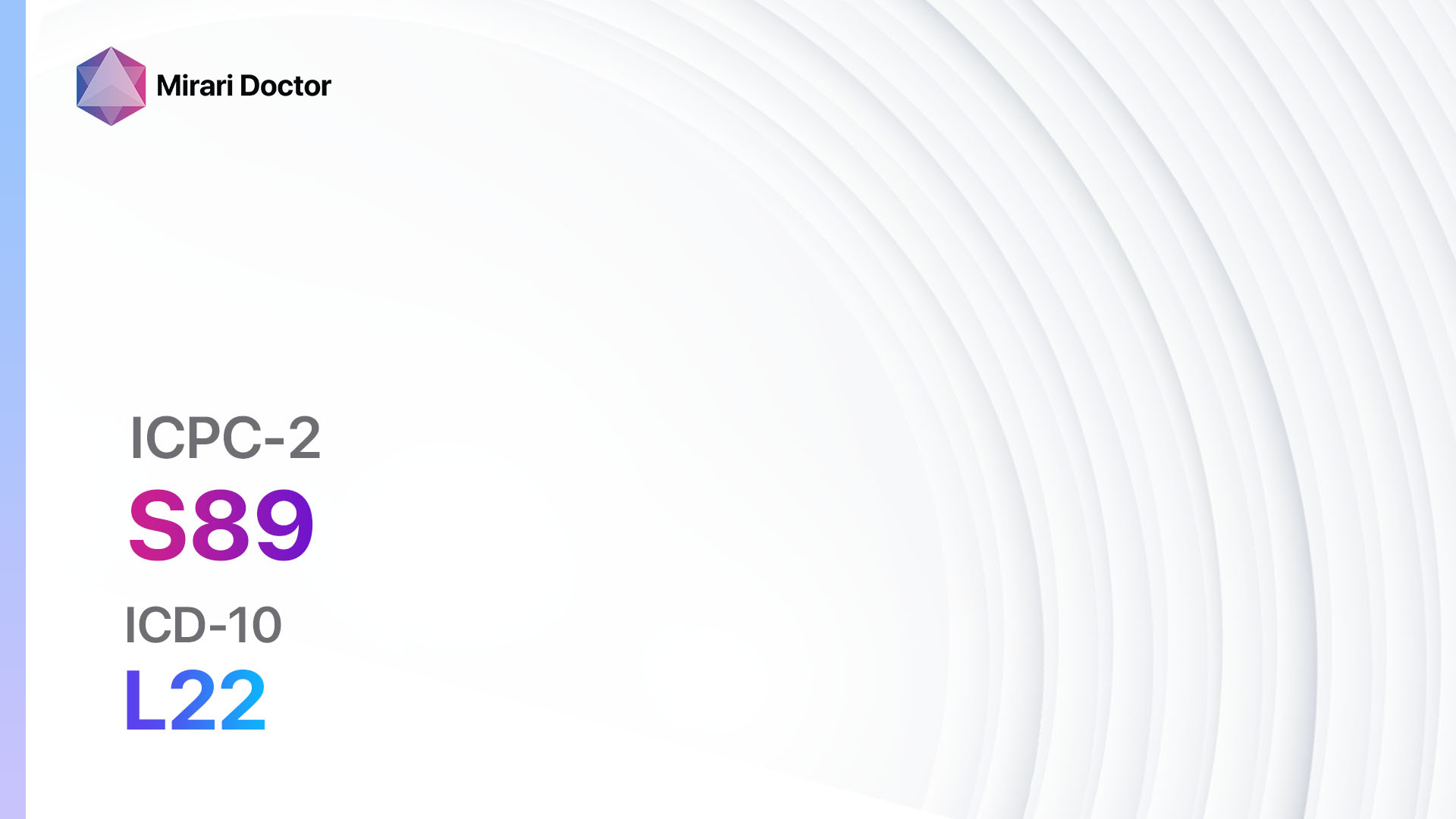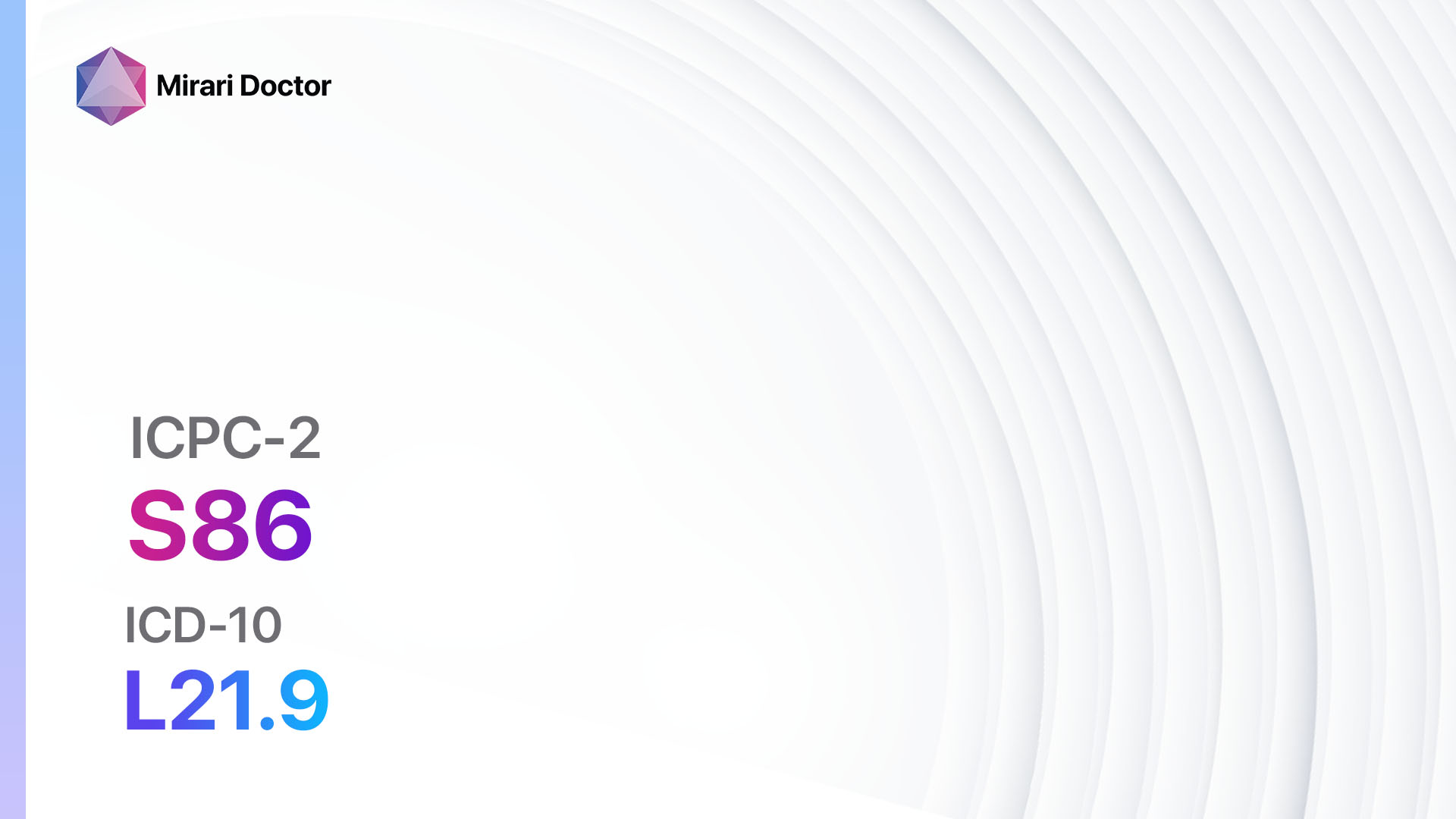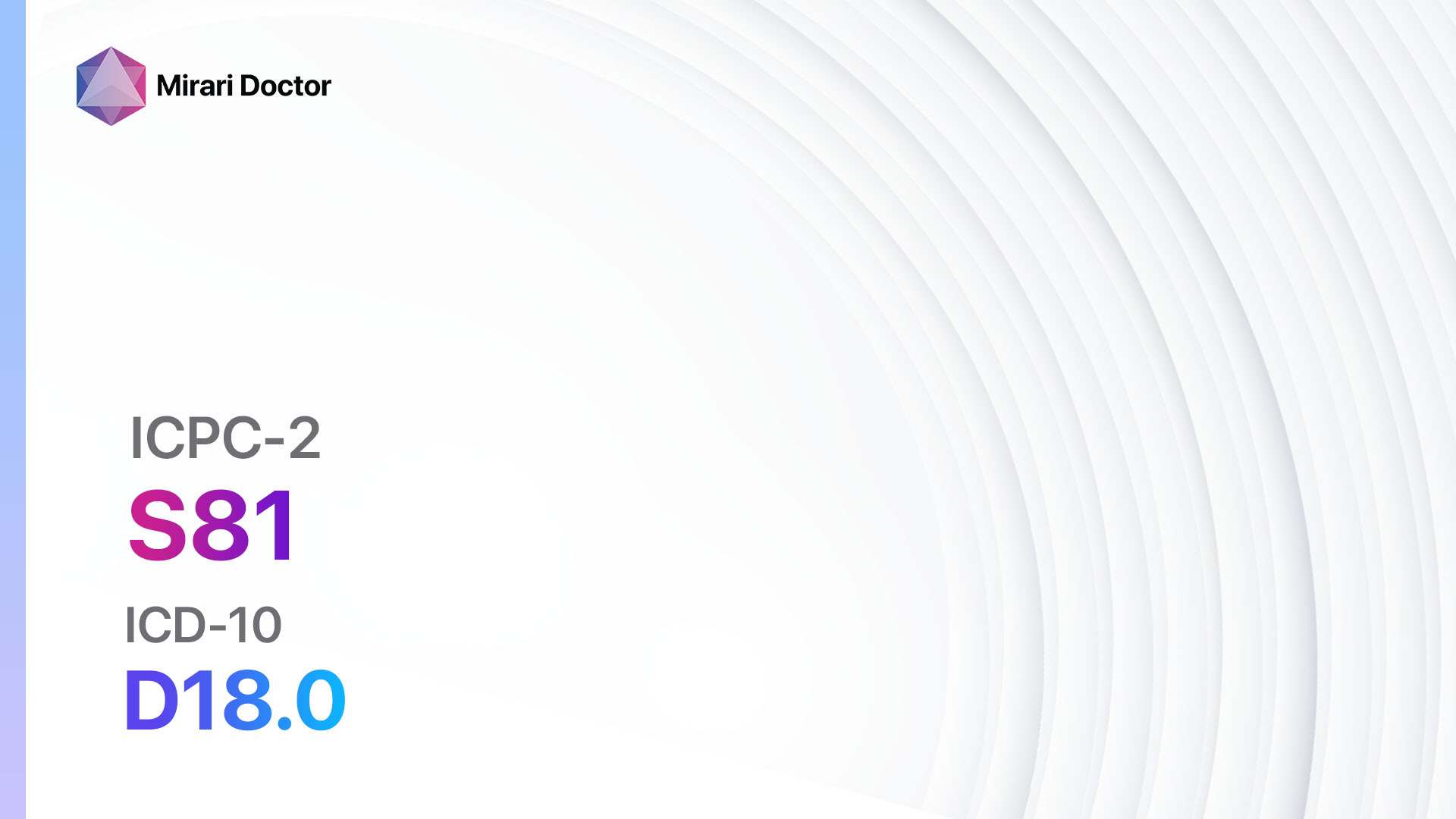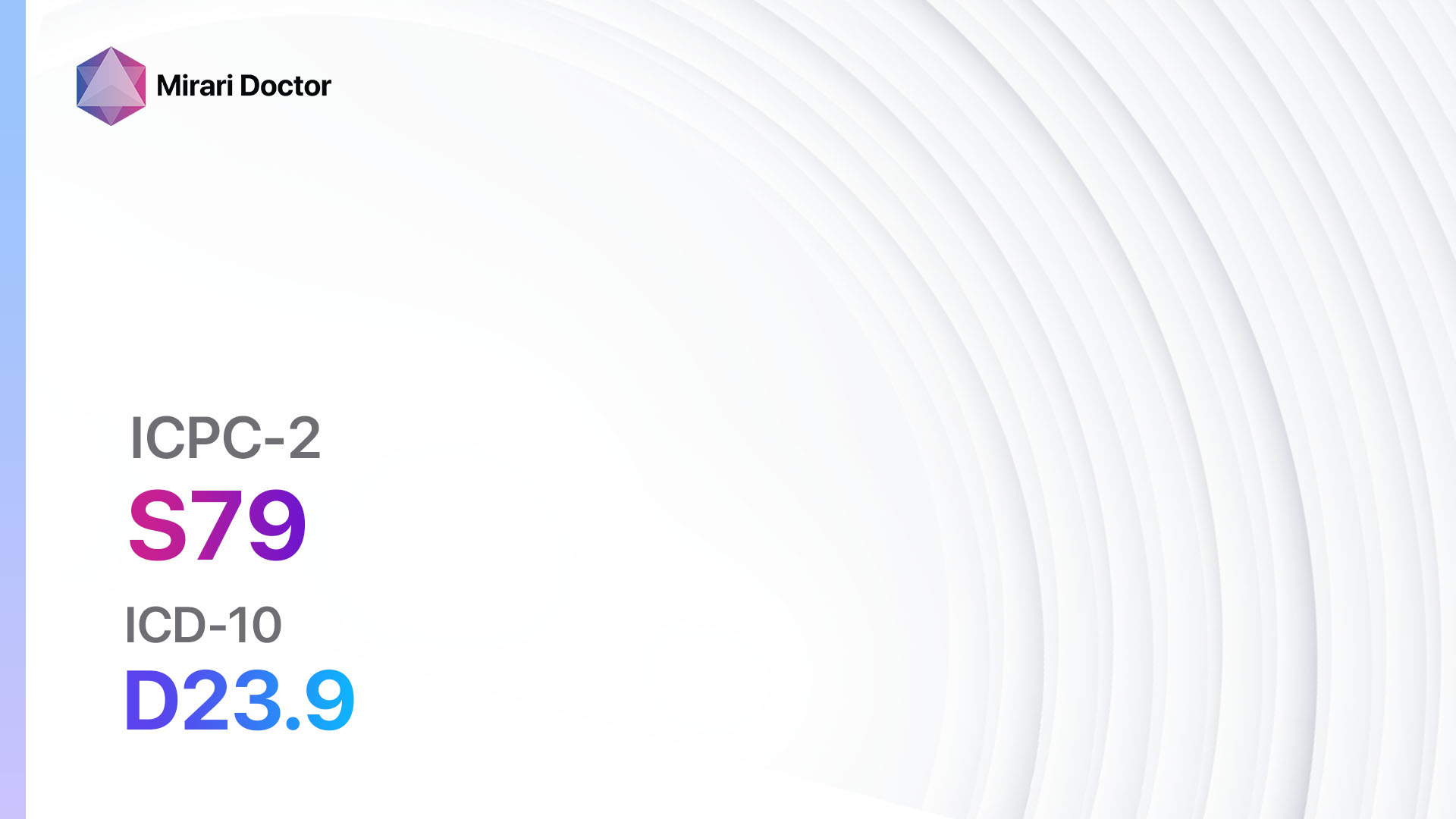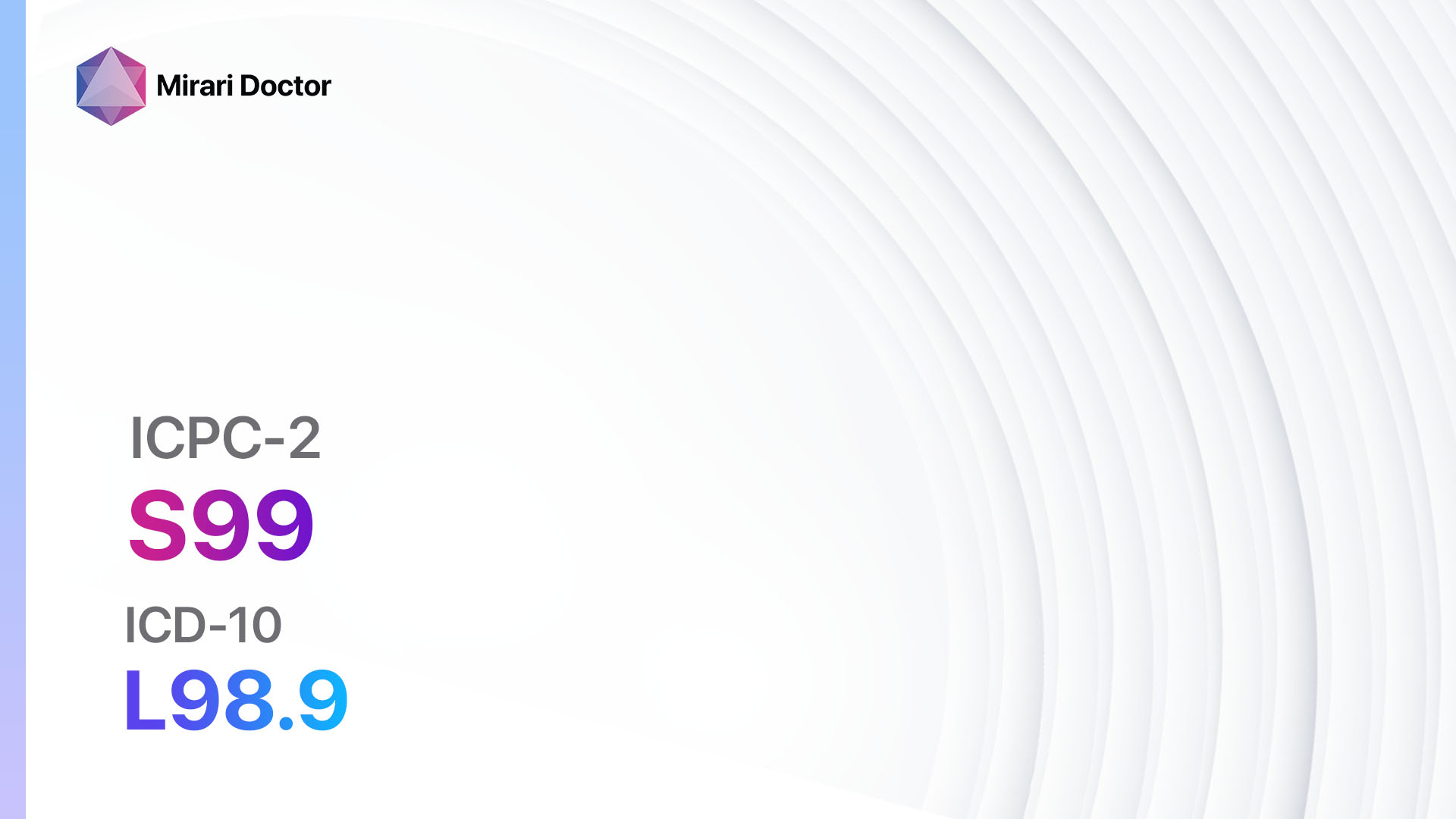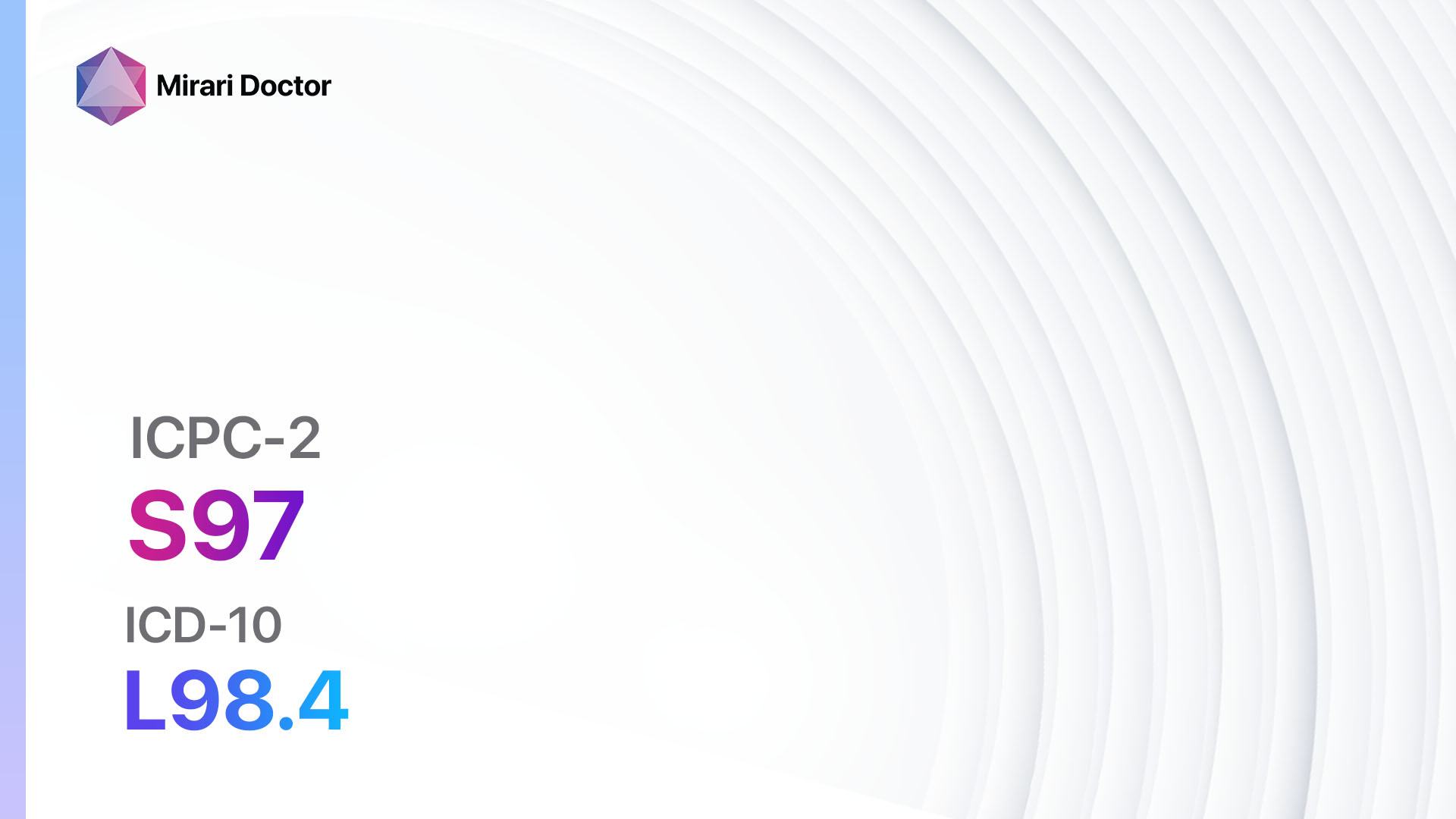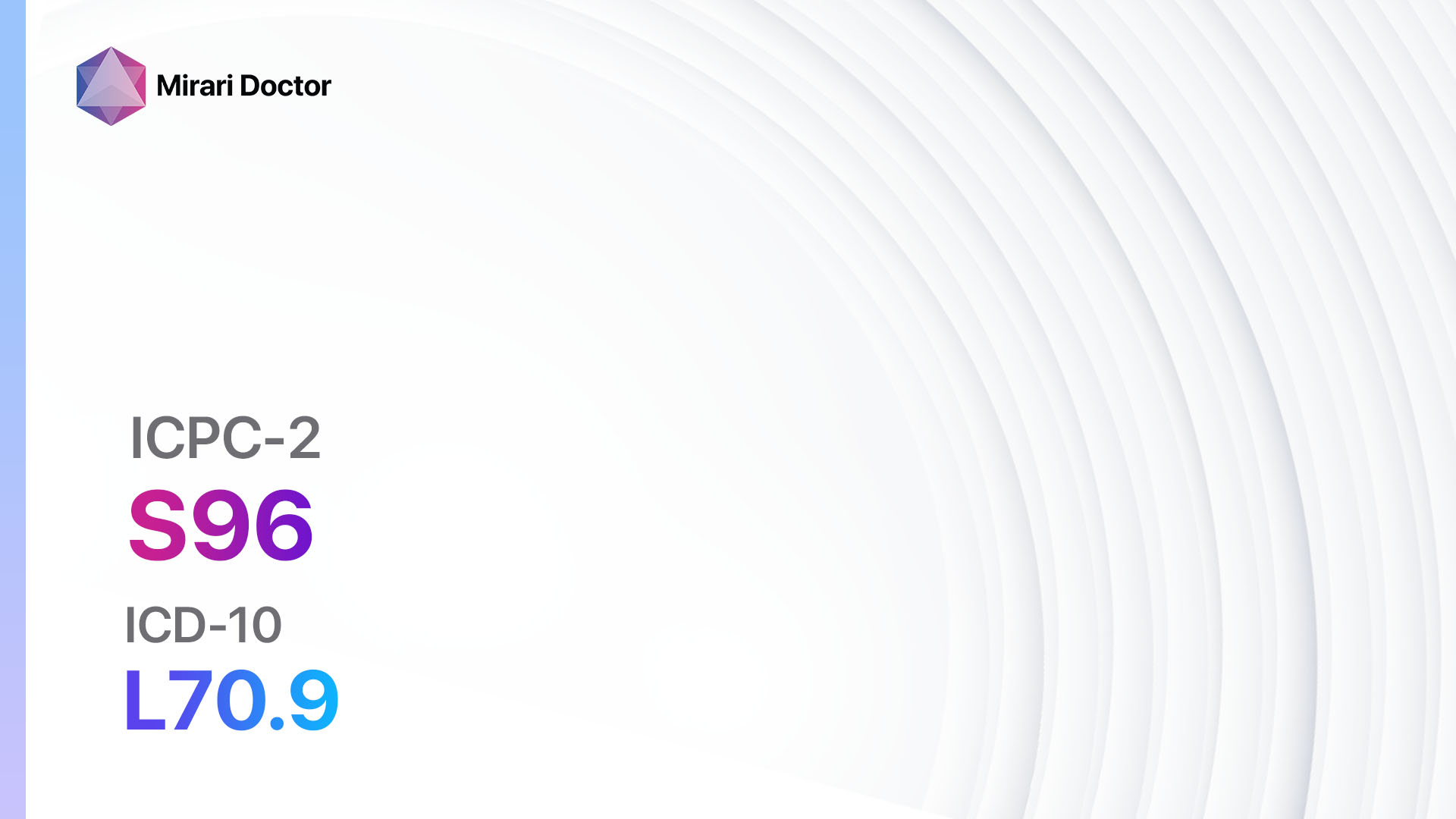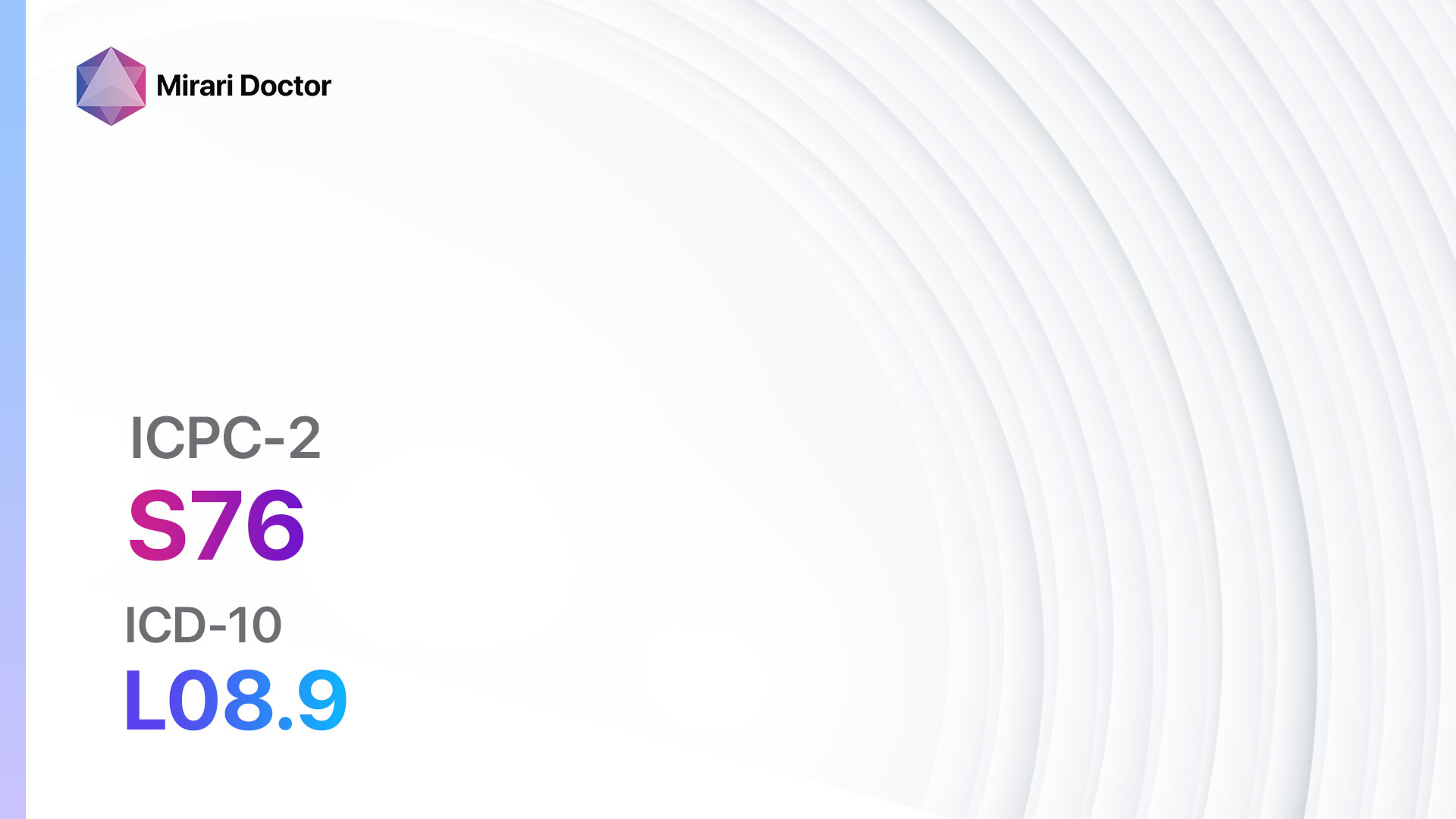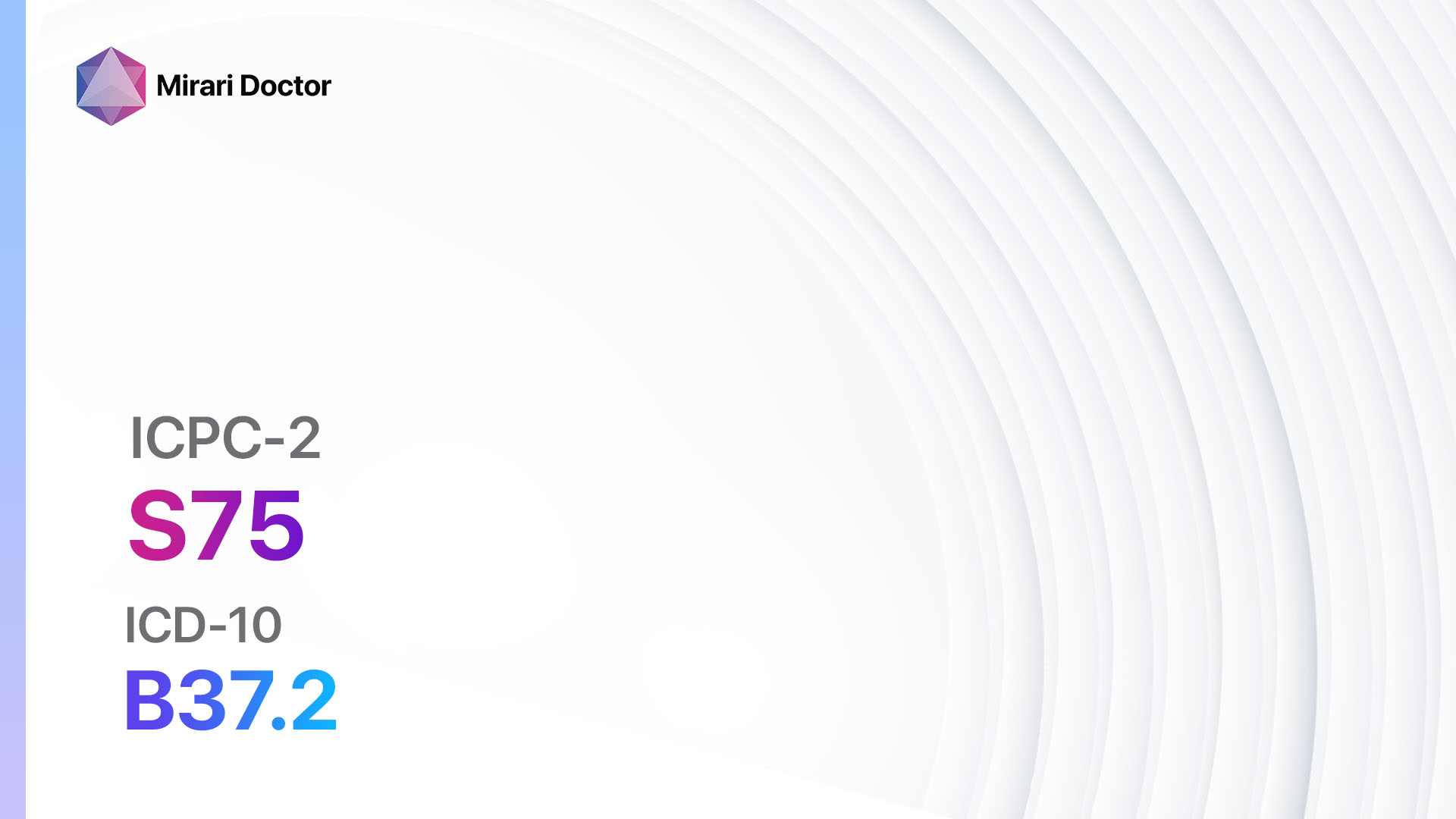
Introduction
Limited function/disability(s) and injury of the skin or subcutaneous tissue can significantly impact a person’s quality of life and overall well-being[1]. This guide aims to provide healthcare professionals with a comprehensive approach to diagnosing and managing this condition. By understanding the symptoms, causes, and appropriate diagnostic steps, healthcare professionals can effectively intervene and improve patient outcomes.
Codes
- ICPC-2 Code: S28 Limited function/disability(s)[2]
- ICD-10 Code: Z73.6 Limitation of activities due to disability[3]
Symptoms
- Pain: Patients may experience localized or radiating pain in the affected area.
- Swelling: Edema or swelling may be present in the injured area.
- Redness: The skin around the injury may appear red or inflamed.
- Bruising: Discoloration or bruising may be visible.
- Limited range of motion: Patients may have difficulty moving the affected area.
- Open wounds: In severe cases, open wounds or ulcers may be present[4].
Causes
- Trauma: Injuries to the skin and subcutaneous tissue can occur due to accidents, falls, or direct blows.
- Friction: Prolonged friction or pressure on the skin can lead to injury, such as pressure ulcers.
- Burns: Thermal, chemical, or electrical burns can cause damage to the skin and underlying tissues.
- Infections: Bacterial, viral, or fungal infections can lead to skin and subcutaneous tissue injuries.
- Chronic conditions: Certain chronic conditions, such as diabetes or peripheral artery disease, can increase the risk of skin and tissue injuries[5].
Diagnostic Steps
Medical History
- Gather information about the patient’s medical history, including any underlying conditions, previous injuries, or surgeries.
- Ask about the onset and duration of symptoms, as well as any factors that may exacerbate or alleviate the symptoms.
- Inquire about the patient’s lifestyle, occupation, and activities that may contribute to the injury[6].
Physical Examination
- Perform a thorough physical examination, focusing on the affected area.
- Assess the appearance of the skin, noting any redness, swelling, or discoloration.
- Palpate the area to evaluate for tenderness, warmth, or induration.
- Evaluate the range of motion and functional limitations of the affected area[7].
Determine Severity
- Classify the injury based on severity and depth, if applicable:
- Superficial injury: Limited to the epidermis and upper layers of the dermis.
- Partial-thickness injury: Involves the epidermis and deeper layers of the dermis.
- Full-thickness injury: Extends through the entire dermis and may involve underlying tissues[8].
Laboratory Tests
- Complete blood count (CBC): Assess for signs of infection or inflammation.
- Blood glucose levels: Evaluate for diabetes or impaired glucose tolerance.
- Wound culture: Collect a sample from the wound to identify the presence of bacteria or other pathogens.
- Biopsy: In cases of chronic or non-healing wounds, a biopsy may be necessary to evaluate for underlying pathology[9].
Diagnostic Imaging
- X-ray: Useful for assessing fractures or foreign bodies in the affected area.
- Ultrasound: Can help evaluate the depth and extent of soft tissue injuries.
- MRI (Magnetic Resonance Imaging): Provides detailed images of soft tissues, useful for assessing deeper injuries or infections[10].
Other Tests
- Doppler ultrasound: Assess blood flow and vascular status in cases of suspected vascular injury or compromised circulation.
- Allergy testing: If an allergic reaction is suspected, allergy testing may be necessary to identify the specific allergen.
Follow-up and Patient Education
- Schedule regular follow-up appointments to monitor the progress of the injury and ensure appropriate healing.
- Provide patient education on wound care, including proper cleaning, dressing changes, and signs of infection.
- Discuss lifestyle modifications, such as weight management, smoking cessation, and regular exercise, to promote overall skin health and prevent future injuries.
Possible Interventions
Traditional Interventions
Medications:
Top 5 drugs for Limited function/disability(s), Injury of skin or subcutaneous tissue:
- Nonsteroidal anti-inflammatory drugs (NSAIDs) (e.g., Ibuprofen, Naproxen):
- Cost: Generic versions can be $3-$20/month.
- Contraindications: History of gastrointestinal bleeding, renal impairment.
- Side effects: Upset stomach, increased risk of bleeding.
- Severe side effects: Gastrointestinal ulcers, kidney damage.
- Drug interactions: Anticoagulants, corticosteroids.
- Warning: Prolonged use may increase the risk of cardiovascular events.
- Topical antibiotics (e.g., Neosporin, Bacitracin):
- Cost: Over-the-counter options are affordable (\<$10).
- Contraindications: Hypersensitivity to the antibiotic.
- Side effects: Local skin irritation, allergic reactions.
- Severe side effects: Rare, but may include severe allergic reactions.
- Drug interactions: None significant.
- Warning: Use only as directed and discontinue if signs of infection worsen.
- Topical corticosteroids (e.g., Hydrocortisone, Betamethasone):
- Cost: Generic versions can range from $5-$30.
- Contraindications: Active infection, open wounds.
- Side effects: Skin thinning, increased risk of infection.
- Severe side effects: Adrenal suppression, Cushing’s syndrome.
- Drug interactions: None significant.
- Warning: Avoid prolonged use on large areas of the body.
- Antibiotics (e.g., Amoxicillin, Cephalexin):
- Cost: Generic versions can range from $10-$50/month.
- Contraindications: Allergy to the antibiotic, renal impairment.
- Side effects: Upset stomach, diarrhea.
- Severe side effects: Severe allergic reactions, Clostridium difficile infection.
- Drug interactions: Oral contraceptives, warfarin.
- Warning: Complete the full course of antibiotics as prescribed.
- Pain medications (e.g., Acetaminophen, Tramadol):
- Cost: Generic versions can range from $3-$20/month.
- Contraindications: Liver disease, history of addiction.
- Side effects: Upset stomach, drowsiness.
- Severe side effects: Liver damage, respiratory depression.
- Drug interactions: Alcohol, other sedating medications.
- Warning: Avoid exceeding the recommended dosage.
Alternative Drugs:
- Silver sulfadiazine cream: Used for infected burns or wounds.
- Hyaluronic acid-based dressings: Promote wound healing and provide a moist environment.
- Collagenase ointment: Helps remove necrotic tissue and promote wound healing.
- Calcium alginate dressings: Absorb excess wound exudate and promote a moist wound environment.
- Growth factors: May be used in chronic or non-healing wounds to stimulate tissue repair.
Surgical Procedures:
- Debridement: Removal of necrotic or non-viable tissue to promote wound healing.
- Skin grafting: Transplantation of healthy skin to cover the wound and promote healing.
- Wound closure: Suturing or stapling of the wound edges to facilitate healing.
- Flap surgery: Transfer of healthy tissue from a nearby area to cover the wound and improve healing.
- Negative pressure wound therapy: Application of a vacuum dressing to promote wound healing and reduce infection risk.
Alternative Interventions
- Acupuncture: May help improve blood flow and reduce pain. Cost: $60-$120 per session.
- Chelation therapy: Controversial treatment involving the administration of chelating agents to remove heavy metals from the body. Cost: $75-$150 per session.
- Hyperbaric oxygen therapy: Involves breathing pure oxygen in a pressurized chamber to increase oxygen delivery to tissues. Cost: $200-$300 per session.
- Herbal supplements: Some herbs, such as aloe vera or calendula, may have potential benefits for wound healing. Cost: Varies depending on the specific supplement.
Lifestyle Interventions
- Proper wound care: Clean the wound regularly, apply appropriate dressings, and follow healthcare professional’s instructions.
- Maintain a healthy diet: Ensure adequate intake of protein, vitamins, and minerals to support wound healing. Cost: Varies depending on dietary choices.
- Smoking cessation: Smoking impairs wound healing and increases the risk of complications. Cost: Varies depending on cessation methods.
- Weight management: Maintaining a healthy weight reduces the risk of pressure ulcers and promotes overall skin health. Cost: Varies depending on dietary choices and exercise options.
- Regular exercise: Promotes circulation and overall skin health. Cost: Varies depending on exercise preferences.
It is important to note that the cost ranges provided are approximate and may vary depending on the location and availability of the interventions. Healthcare professionals should consider the individual patient’s needs, preferences, and financial situation when recommending interventions.
Mirari Cold Plasma Alternative Intervention
Understanding Mirari Cold Plasma
- Safe and Non-Invasive Treatment: Mirari Cold Plasma is a safe and non-invasive treatment option for various skin conditions. It does not require incisions, minimizing the risk of scarring, bleeding, or tissue damage.
- Efficient Extraction of Foreign Bodies: Mirari Cold Plasma facilitates the removal of foreign bodies from the skin by degrading and dissociating organic matter, allowing easier access and extraction.
- Pain Reduction and Comfort: Mirari Cold Plasma has a local analgesic effect, providing pain relief during the treatment, making it more comfortable for the patient.
- Reduced Risk of Infection: Mirari Cold Plasma has antimicrobial properties, effectively killing bacteria and reducing the risk of infection.
- Accelerated Healing and Minimal Scarring: Mirari Cold Plasma stimulates wound healing and tissue regeneration, reducing healing time and minimizing the formation of scars.
Mirari Cold Plasma Prescription
Video instructions for using Mirari Cold Plasma Device – S28 Limited function/disability(s) (ICD-10:Z73.6)
| Mild | Moderate | Severe |
| Mode setting: 1 (Infection) Location: 0 (Localized) Morning: 15 minutes, Evening: 15 minutes | Mode setting: 1 (Infection) Location: 0 (Localized) Morning: 30 minutes, Lunch: 30 minutes, Evening: 30 minutes | Mode setting: 1 (Infection) Location: 0 (Localized) Morning: 30 minutes, Lunch: 30 minutes, Evening: 30 minutes |
| Mode setting: 2 (Wound Healing) Location: 0 (Localized) Morning: 15 minutes, Evening: 15 minutes | Mode setting: 2 (Wound Healing) Location: 0 (Localized) Morning: 30 minutes, Lunch: 30 minutes, Evening: 30 minutes | Mode setting: 2 (Wound Healing) Location: 0 (Localized) Morning: 30 minutes, Lunch: 30 minutes, Evening: 30 minutes |
| Total Morning:30minutesapprox.$5USD, Evening:30minutesapprox.$5USD | Total Morning:60minutesapprox.$10USD, Lunch:60minutesapprox. $10 USD, Evening:60minutesapprox. $10 USD, | Total Morning:60minutesapprox.$10USD, Lunch:60minutesapprox. $10 USD, Evening:60minutesapprox. $10 USD, |
| Usualtreatmentfor7-60daysapprox.$70USD–$600USD | Usualtreatmentfor6-8weeksapprox.$1,260USD–$1,680USD | Usualtreatmentfor3-6monthsapprox.$2,700USD–$5,400USD |
 |
|
Use the Mirari Cold Plasma device to treat Limited function/disability(s), Injury of skin or subcutaneous tissue effectively.
WARNING: MIRARI COLD PLASMA IS DESIGNED FOR THE HUMAN BODY WITHOUT ANY ARTIFICIAL OR THIRD PARTY PRODUCTS. USE OF OTHER PRODUCTS IN COMBINATION WITH MIRARI COLD PLASMA MAY CAUSE UNPREDICTABLE EFFECTS, HARM OR INJURY. PLEASE CONSULT A MEDICAL PROFESSIONAL BEFORE COMBINING ANY OTHER PRODUCTS WITH USE OF MIRARI.
Step 1: Cleanse the Skin
- Start by cleaning the affected area of the skin with a gentle cleanser or mild soap and water. Gently pat the area dry with a clean towel.
Step 2: Prepare the Mirari Cold Plasma device
- Ensure that the Mirari Cold Plasma device is fully charged or has fresh batteries as per the manufacturer’s instructions. Make sure the device is clean and in good working condition.
- Switch on the Mirari device using the power button or by following the specific instructions provided with the device.
- Some Mirari devices may have adjustable settings for intensity or treatment duration. Follow the manufacturer’s instructions to select the appropriate settings based on your needs and the recommended guidelines.
Step 3: Apply the Device
- Place the Mirari device in direct contact with the affected area of the skin. Gently glide or hold the device over the skin surface, ensuring even coverage of the area experiencing.
- Slowly move the Mirari device in a circular motion or follow a specific pattern as indicated in the user manual. This helps ensure thorough treatment coverage.
Step 4: Monitor and Assess:
- Keep track of your progress and evaluate the effectiveness of the Mirari device in managing your Limited function/disability(s), Injury of skin or subcutaneous tissue. If you have any concerns or notice any adverse reactions, consult with your health care professional.
Note
This guide is for informational purposes only and should not replace the advice of a medical professional. Always consult with your healthcare provider or a qualified medical professional for personal advice, diagnosis, or treatment. Do not solely rely on the information presented here for decisions about your health. Use of this information is at your own risk. The authors of this guide, nor any associated entities or platforms, are not responsible for any potential adverse effects or outcomes based on the content.
Mirari Cold Plasma System Disclaimer
- Purpose: The Mirari Cold Plasma System is a Class 2 medical device designed for use by trained healthcare professionals. It is registered for use in Thailand and Vietnam. It is not intended for use outside of these locations.
- Informational Use: The content and information provided with the device are for educational and informational purposes only. They are not a substitute for professional medical advice or care.
- Variable Outcomes: While the device is approved for specific uses, individual outcomes can differ. We do not assert or guarantee specific medical outcomes.
- Consultation: Prior to utilizing the device or making decisions based on its content, it is essential to consult with a Certified Mirari Tele-Therapist and your medical healthcare provider regarding specific protocols.
- Liability: By using this device, users are acknowledging and accepting all potential risks. Neither the manufacturer nor the distributor will be held accountable for any adverse reactions, injuries, or damages stemming from its use.
- Geographical Availability: This device has received approval for designated purposes by the Thai and Vietnam FDA. As of now, outside of Thailand and Vietnam, the Mirari Cold Plasma System is not available for purchase or use.
References
- Kottner, J., Beeckman, D., Vogt, A., et al. (2020). Skin health and integrity in older adults: A state of the science review. Journal of Tissue Viability, 29(4), 290-303.
- World Organization of Family Doctors. (2020). ICPC-2 English. Retrieved from//www.globalfamilydoctor.com/site/DefaultSite/filesystem/documents/Groups/WICC/International%20Classification%20of%20Primary%20Care%20Dec16.pdf
- World Health Organization. (2019). ICD-10 Version:2019. Retrieved from//icd.who.int/browse10/2019/en#/Z73.6
- Guo, S., & DiPietro, L. A. (2010). Factors affecting wound healing. Journal of Dental Research, 89(3), 219-229.
- Eming, S. A., Martin, P., & Tomic-Canic, M. (2014). Wound repair and regeneration: Mechanisms, signaling, and translation. Science Translational Medicine, 6(265), 265sr6.
- Baranoski, S., & Ayello, E. A. (2016). Wound care essentials: Practice principles. Lippincott Williams & Wilkins.
- Doughty, D. B., & McNichol, L. L. (2015). Wound, ostomy and continence nurses society® core curriculum: Wound management. Lippincott Williams & Wilkins.
- Lazarus, G. S., Cooper, D. M., Knighton, D. R., et al. (1994). Definitions and guidelines for assessment of wounds and evaluation of healing. Archives of Dermatology, 130(4), 489-493.
- Schultz, G. S., Sibbald, R. G., Falanga, V., et al. (2003). Wound bed preparation: a systematic approach to wound management. Wound Repair and Regeneration, 11(s1), S1-S28.
- Blankenship, C. L., & Baker, J. C. (2020). Imaging evaluation of acute traumatic adult elbow injuries. RadioGraphics, 40(3), 791-807.
Related articles
Made in USA



